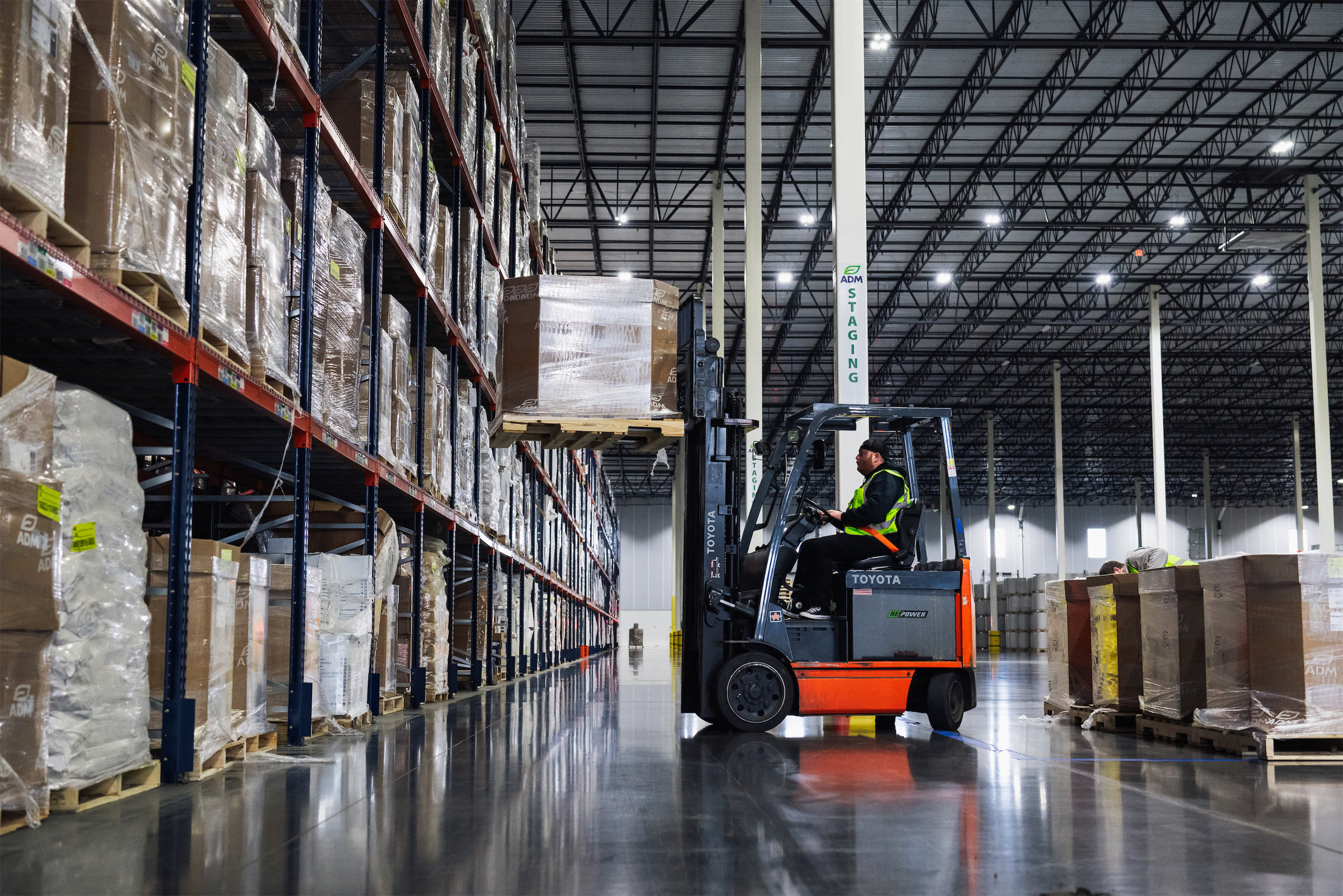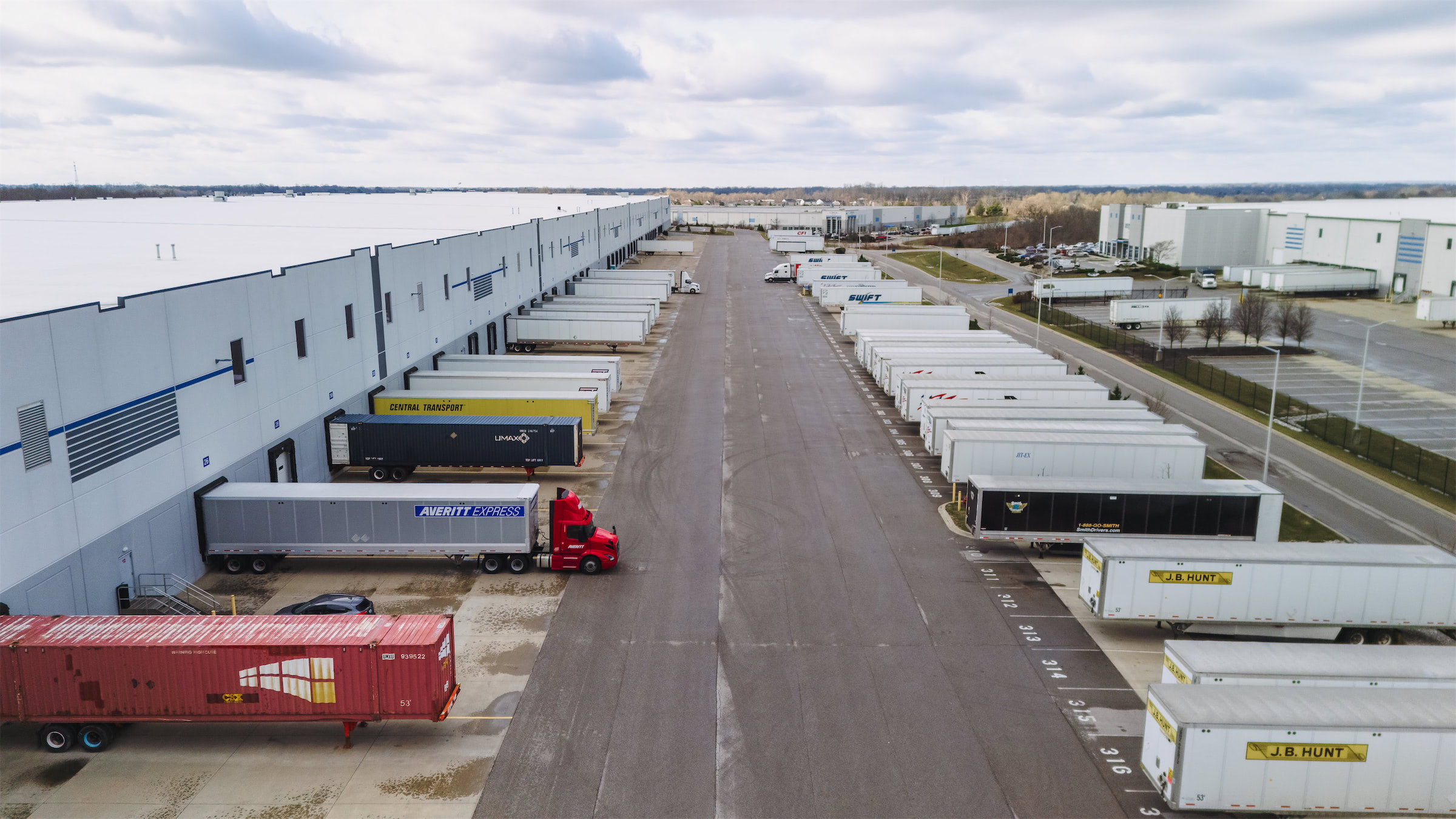Peak Season Playbook: Scaling Warehouse Operations

Every operations manager knows the peak season paradox: you need double the warehouse capacity and triple the labor force for three months, but you can't afford to maintain those resources year-round. This guide reveals proven strategies for scaling efficiently during demand spikes while controlling costs.
The warehousing decision facing your company seems straightforward: build your own facility or outsource to a third-party logistics provider. But as any CFO who's navigated this decision knows, the financial implications extend far beyond comparing lease rates to construction costs. This choice impacts everything from balance sheet structure to operational flexibility, tax obligations to opportunity costs. Make the right decision, and you've positioned your company for scalable growth. Make the wrong one, and you've locked in constraints that could hamper competitiveness for years.
Today's volatile business environment has fundamentally changed the build versus buy equation. Supply chain disruptions, labor shortages, and rapidly evolving technology have introduced new variables that weren't considerations even five years ago. The traditional analysis that favored ownership for stable, predictable operations no longer holds when change is the only constant. For financial executives evaluating warehousing strategies, understanding these new dynamics is essential for making decisions that create long-term value.
The True Cost of Building
Building your own warehouse requires capital investment that extends far beyond the obvious costs of land and construction. While these direct costs typically range from $50-150 per square foot depending on location and specifications, they represent only the beginning of the financial commitment.
Hidden development costs quickly accumulate. Site preparation, utility connections, and road improvements can add 20-30% to base construction costs. Permitting and environmental assessments introduce delays that translate into carrying costs and lost opportunities. Technology infrastructure—from warehouse management systems to material handling equipment—can equal or exceed building costs. Professional warehousing providers have already absorbed these investments, spreading costs across multiple clients.
Ongoing operational costs often surprise companies new to warehouse ownership. Property taxes, insurance, maintenance, and utilities create fixed costs that persist regardless of utilization. A 200,000 square foot warehouse might incur $500,000+ annually in these expenses before the first product arrives. These fixed costs become particularly painful during economic downturns when volumes decline but expenses remain constant.
Opportunity Cost Considerations
Capital tied up in warehouse construction represents capital unavailable for core business investments. For a growing company, the $10-20 million required for a modest warehouse facility might alternatively fund product development, market expansion, or strategic acquisitions that generate higher returns.
The opportunity cost calculation becomes more complex when considering the time value of money and alternative investment returns. If your business generates 15-20% returns on invested capital while warehouse ownership yields 6-8% (primarily through appreciation), the economic argument for building weakens considerably. Contract warehousing preserves capital for higher-return investments while providing necessary logistics infrastructure.
Speed to market represents another critical opportunity cost. Building a warehouse typically requires 12-18 months from site selection to operation. During this period, growth opportunities may be missed, customer demands unmet, and competitive advantages lost. Outsourced solutions can often be operational within 30-60 days, capturing value that would otherwise be forfeited during construction.
Financial Flexibility and Risk Management
Warehouse ownership creates financial rigidity that can become problematic as business conditions change. A facility optimized for today's needs may prove inadequate or excessive within 3-5 years. E-commerce growth, SKU proliferation, or market shifts can render owned facilities obsolete while lease obligations or ownership persist.
Economic downturns particularly expose the risks of warehouse ownership. Fixed costs continue while revenues decline, pressuring margins and cash flow. The 2008 financial crisis left many companies with excess warehouse capacity they couldn't shed, while the COVID-19 pandemic created sudden capacity needs that owned facilities couldn't accommodate. Flexible warehousing solutions enable rapid scaling up or down based on actual business conditions.
Geographic constraints of owned facilities limit market responsiveness. A single owned facility might serve current markets adequately but constrain expansion into new regions. Multi-location outsourced strategies provide geographic flexibility without multiple capital investments, enabling market testing and expansion with minimal risk.
Balance Sheet Implications
The build versus buy decision significantly impacts financial statements and key metrics that stakeholders monitor. Warehouse ownership adds assets and potentially debt to the balance sheet, affecting leverage ratios and return on assets calculations. For public companies, these metrics influence stock valuations and borrowing costs.
Operating leases for outsourced warehousing, while now appearing on balance sheets under new accounting standards, still provide advantages over ownership. The liability is typically shorter-term and more flexible than mortgage debt. More importantly, outsourcing converts fixed assets into variable expenses, improving asset efficiency metrics that investors increasingly scrutinize.
Tax implications vary significantly between building and buying. Ownership provides depreciation benefits but also creates property tax obligations and potential nexus issues for multi-state operations. Strategic outsourcing can optimize tax positioning while avoiding the complexity of multi-jurisdictional property ownership.
Technology and Expertise Factors
Modern warehousing increasingly depends on sophisticated technology and specialized expertise. Warehouse Management Systems, robotics, and advanced analytics require significant investment and ongoing updates. Building your own facility means bearing these costs entirely while potentially lacking the volume to justify cutting-edge solutions.
Outsourced providers spread technology investments across multiple clients, providing access to advanced systems that might be uneconomical for single-company facilities. They also maintain specialized expertise in areas like regulatory compliance, safety management, and process optimization that can be challenging to develop internally.
The pace of logistics technology evolution creates obsolescence risk for owned facilities. Automation solutions implemented today may be outdated within 5-7 years, requiring additional capital investment. Third-party providers continuously update their technology, ensuring clients benefit from current best practices without bearing upgrade costs.
Labor Considerations
Warehouse labor management has become increasingly challenging, with turnover rates exceeding 100% annually in many markets. Building your own facility means accepting responsibility for recruiting, training, and retaining warehouse workers in a highly competitive labor market.
Outsourced providers offer labor stability through scale advantages. They can offer career paths, cross-training opportunities, and benefit packages that smaller operations cannot match. During peak seasons, they can flex labor across multiple clients, avoiding the hire-fire cycles that damage employer reputation and increase costs.
The expertise required to manage modern warehouse operations continues to expand. Safety compliance, technology management, and process optimization require specialized knowledge that's expensive to maintain for a single facility. Outsourced providers maintain these competencies as core capabilities, delivering expertise that would be cost-prohibitive to develop internally.
Making the Decision
The build versus buy decision ultimately depends on specific business circumstances, but several factors consistently favor outsourcing for most companies:
- Growth uncertainty: If your volume projections vary by more than 20%, flexibility becomes paramount
- Capital constraints: When capital returns exceed 12-15% in core operations, warehouse ownership rarely makes financial sense
- Geographic dispersion: Multi-market operations benefit from distributed outsourced networks
- Technology gaps: Companies lacking logistics technology expertise gain more from outsourcing
- Market volatility: Industries with seasonal or cyclical demand patterns benefit from variable cost structures
The Hybrid Approach
Some companies find success with hybrid strategies that combine owned and outsourced facilities. Core distribution centers might be owned while overflow, seasonal, or regional needs are outsourced. This approach balances control with flexibility but requires careful coordination to avoid operational complexity.
Commonwealth Inc. works with clients across the ownership spectrum, from fully outsourced to hybrid models. Our expertise helps companies evaluate options objectively, considering both immediate needs and long-term strategic positioning.
Conclusion
The build versus buy decision for warehousing has evolved from a simple cost comparison to a complex strategic choice affecting financial flexibility, operational capability, and competitive positioning. While ownership may still make sense for companies with stable, concentrated operations, the increasing pace of change and complexity of modern logistics favor outsourced solutions for most organizations.
CFOs evaluating this decision must look beyond immediate costs to consider opportunity costs, risk factors, and strategic flexibility. The right choice positions the company for growth while preserving capital and minimizing risk. The wrong choice can constrain operations and finances for years to come.
Ready to explore how outsourced warehousing can strengthen your financial position while improving operational capability? Contact Commonwealth Inc. to discuss solutions that align with your strategic and financial objectives.
Frequently Asked Questions
What's the typical payback period for building a warehouse?
Payback periods for warehouse construction typically range from 10-15 years when considering full development costs. This assumes stable operations and doesn't account for opportunity costs or major retrofit requirements. Market appreciation can accelerate payback, but operational obsolescence often occurs before full payback is achieved.
How do interest rates affect the build vs. buy decision?
Rising interest rates significantly impact the build economics by increasing construction financing and mortgage costs. A 2% rate increase might add $400,000+ annually to debt service for a $20 million facility. Conversely, outsourced warehousing costs remain relatively stable, making them more attractive in high-rate environments.
What are the switching costs if we choose wrong?
Exiting owned facilities involves selling or leasing property, which can take 6-18 months in normal markets. Exiting outsourced arrangements typically requires 30-90 days notice. The flexibility differential becomes critical during strategic shifts or economic downturns when rapid adjustment is necessary.
How do we evaluate 3PL financial stability?
Evaluate potential partners through financial statements, credit ratings, client references, facility ownership structures, and technology investments. Look for providers with diverse client bases, long operating histories, and strong banking relationships. Financial stability ensures your partner can invest in capabilities and weather economic cycles.
What about control and customization concerns?
Modern 3PLs offer extensive customization through dedicated operations, specialized processes, and integrated technology. Contract warehousing provides control similar to ownership while preserving flexibility. The key is selecting partners who align with your operational requirements and corporate culture.
How do we handle proprietary processes or products?
Confidentiality agreements, dedicated space, and restricted access protocols protect proprietary operations. Many 3PLs have experience handling sensitive products and processes. The key is clear communication about security requirements and selecting partners with appropriate safeguards.
What size company should consider building vs. buying?
Company size matters less than operational characteristics. Stable operations with 500,000+ square feet of consistent need might justify ownership. However, even large companies increasingly outsource to maintain flexibility. Growth rate, geographic dispersion, and capital availability are more important than absolute size.
Can we finance warehouse construction off-balance-sheet?
Various structures like sale-leasebacks or synthetic leases can minimize balance sheet impact, but accounting rules have tightened. These structures often cost more than traditional financing while providing less flexibility than true outsourcing. Consult your auditors before pursuing off-balance-sheet strategies.
Recent blogs

5 Signs You've Outgrown Your Current Warehouse Solution
It happens gradually, then suddenly. Your once-adequate warehouse operation starts showing stress fractures—orders ship late, inventory accuracy declines, costs creep upward. Here are some signs it's time for a change.

Converting Fixed Costs to Variable: The Financial Impact of Outsourced Warehousing
The holy grail of financial management is achieving perfect cost variability; expenses that scale precisely with revenue. Discover how converting to variable costs fundamentally changes your financial risk profile.

Build vs. Buy: The CFO's Guide to Warehousing Decisions
The warehousing decision facing your company seems straightforward: build your own facility or outsource to a third-party logistics provider. But the financial implications extend far beyond comparing lease rates to construction costs, impacting everything from balance sheet structure to operational flexibility.
Arrange a visit
See the Commonwealth difference in action
We believe the best way to understand our capabilities is to experience them firsthand. We invite you to tour one of our facilities, meet our team, and discover how Commonwealth can optimize your logistics operations. Let us show you why so many businesses trust us with their supply chain needs.
Let’s optimize your supply chain together
At Commonwealth, we're committed to providing tailored logistics solutions that meet your unique business needs. Whether you have a question about our services, want to request a quote, or are ready to schedule a facility tour, our team is here to help.